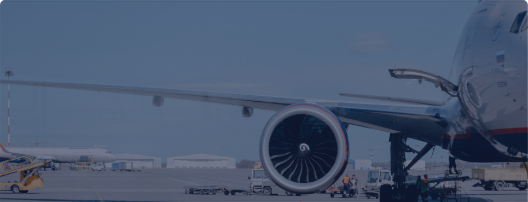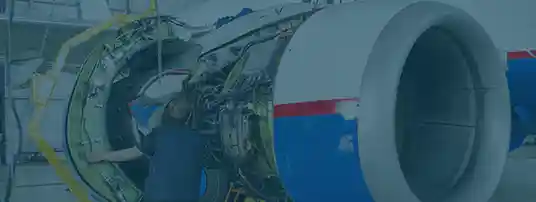Posted on May 31, 2021 linda strong aviation
Aircraft landing gear can come in a variety of forms, the most common being those that utilize wheels. With a tire and wheel assembly, the entire weight of an aircraft can optimally be supported during takeoff, landing, and taxi procedures. To ensure that even the most massive commercial transporters are supported, wheels are engineered to be extremely strong, yet lightweight. To best understand how the tire and wheel assembly efficiently provides for aircraft ground procedures, one must learn how they are designed and how they function.
While early aircraft wheels were more simplistic, modern two-piece aircraft wheels may be cast or forged from either aluminum or magnesium to achieve the properties needed of such assemblies. The two halves of the aircraft wheel are fastened together with bolts, the rim being sealed with an o-ring to accommodate tubeless tire designs. The bead seat of a wheel is the section where the tire comes into contact with the assembly, thus it is crucial that the bead seat is capable of taking on heavy tensile loads upon the touchdown of wheels during landing procedures.
Despite coming in two halves, each section of the wheel is not identical to the other. The inner half of the wheel is specifically designed for the attachment of various equipment pieces, including those such as the aircraft brake rotors. For high performance aircraft that may generate immense amounts of heat during the braking process, thermal plugs filled with low melting point alloys are implemented so that the tire is deflated before reaching the chance of explosion. Heat shields are also often present in wheel construction for similar means of preventing overheating conditions due to friction resulting from braking.
While the inner half of the wheel tends to have an increased amount of equipment for facilitating its operations, there are various important parts of the outer wheel half as well. If an aircraft has an anti-skid system, the wheel-spin transducer will often be placed on the outer half. Additionally, the valve stem is typically placed on the outer side, permitting the inflation and deflation of tubeless tires. For tube-type tires, on the other hand, a valve stem extension may pass through the inner wheel half for the means of inflation and deflation.
The tires are also a crucial part of the assembly, undertaking a large amount of abuse when conducting landing procedures and other ground-based operations. For aircraft applications in particular, bias-ply and radial tires are the two primary types, each featuring somewhat different designs that may be beneficial for certain applications. The bias-ply tire is quite popular for its durability and retreadability, utilizing a tread composed of rubber and additives to achieve the necessary qualities for efficient landings. For their sidewall, a protective layer of rubber guards the outer casing ply, running from the tread edge to the bead area. To achieve the strength that such tires are known for, rubber-coated fabrics are placed in alternate layers where they run at opposite angles from one another.
Radial tires are a preferable option when there is a desire for reduced rolling resistance upon landing. The construction of such tire types is often less complex, resulting in a lighter assembly. Radial plies are unique for their belt plies, those of which are composite structures capable of increasing tire strength in the tread area for increased landings. Additionally, the casing plies of radial tires run radially from bead to bead, rather than at opposite angles.
Regardless of the design or construction of various tires and wheels, the tire and wheel assemblies of aircraft must undergo regular inspections and maintenance procedures to ensure their airworthiness and safety. At Aviation Sourcing Solutions, we can help you procure top aircraft manufacturer parts at competitive prices with ease. With over 2 billion items currently available for purchase on our website, customers can find a vast array of new, used, and obsolete parts that cater to a variety of applications and industries. Get started on the purchasing process today with a quote for your comparisons when you fill out and submit an Instant RFQ form through our website.

 The only independent
The only independent



“We Proudly Support Intrepid Fallen Heroes Fund that serves United States Military Personal experiencing the Invisible Wounds of War : Traumatic Brain Injury (TBI) and Post Traumatic Stress (PTS). Please visit website (www.fallenheroesfund.org) and help in their valiant effort”.
We Hope that You Will Visit Us Again the Next Time You Need Aircraft Parts and Make Us Your Strategic Purchasing Partner.
Request for Quote